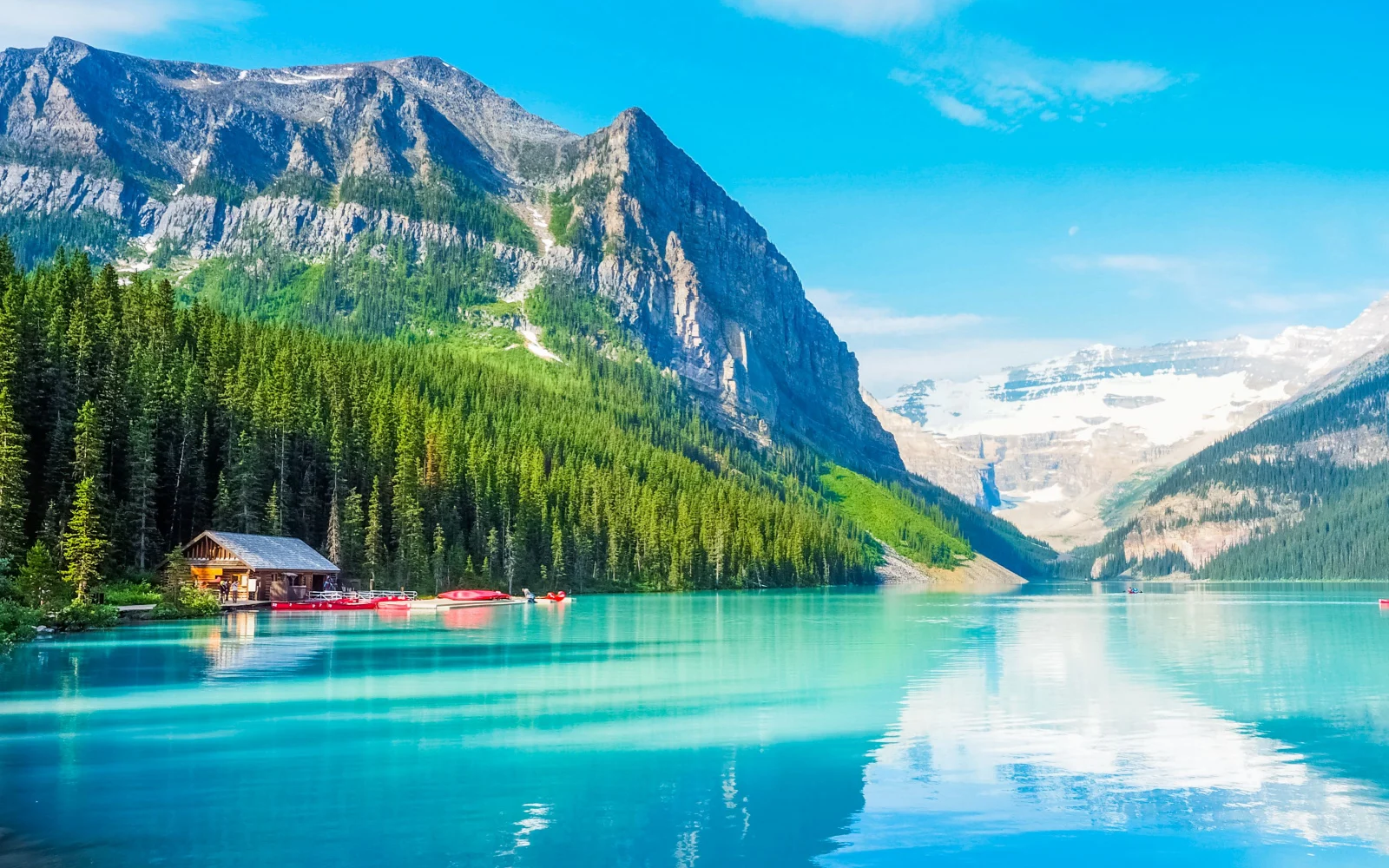What's the best time to visit Lake Louise?
The best time to visit Lake Louise is in July and August when the weather is ideal for watersports and hiking, with temperatures between 60 and 70 degrees, and the lake turns a stunning blue.
Although it’s pricier during these months, the full range of tourist activities and vibrant summer atmosphere make it worthwhile. For skiers, late January to February offers fewer crowds and lower prices, with excellent snow conditions lasting into March.
One of the world’s most famous travel destinations is Lake Louise in Alberta, Canada. It’s a gorgeous lake situated in the heart of Banff National Park in the Canadian Rockies. The area sees about three million visitors annually from all over the globe during all times of the year
But before you plan a trip to this fantastic natural wonder of Canada, you should know what you might run into during different seasons.
No matter what kind of trip you want to take to Lake Louise — hiking, camping, or skiing, to name a few — we’ve got everything you need to know to make the most of your trip into the Canadian wilderness.
The Overall Best Time to Visit Lake Louise
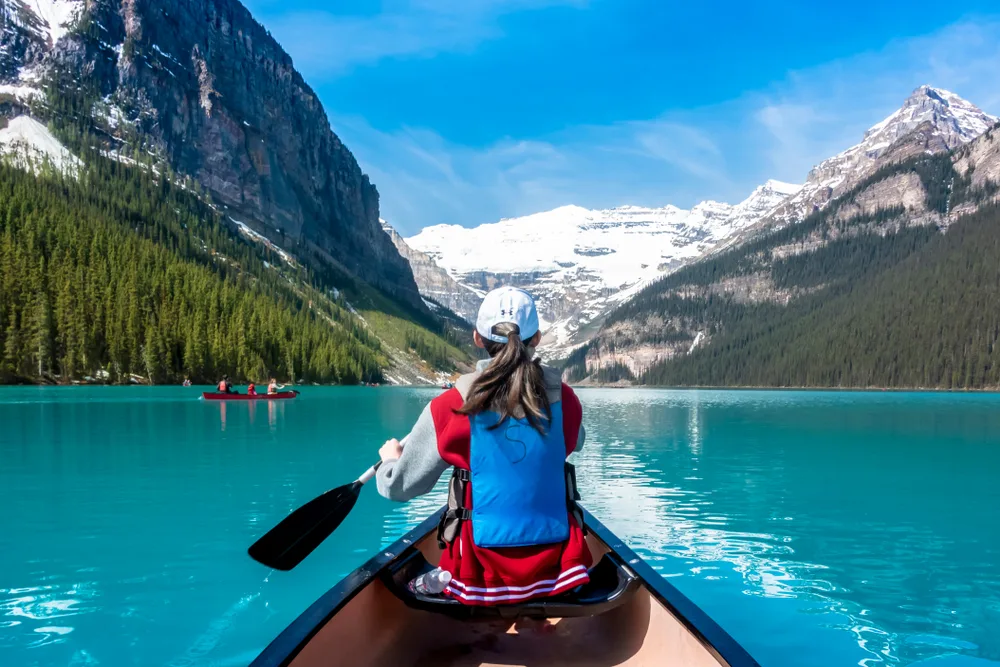
Kelly Shen/Shutterstock
The best time to visit Lake Louise is from July to August. Being in the mountains and resting at a high altitude, Lake Louise never gets hot, so you’re able to enjoy watersports and hiking in the area, as the temperatures are between 60 and 70 degrees.
The lake’s waters turn a brilliant blue under the sun, and the warmth of summer is perfect for exploring trails and camping. While you’ll have to pay a steep price to visit during this time, it’s well worth the increased cost.
All tourist activities are in full swing, and the whole area comes to life in the warmer months. Skiers and wintertime visitors are much more fortunate.
Crowds visiting Lake Louise thin out in late January and February, so prices go down, but the snow stays well into March, and you won’t miss out by traveling when others aren’t.
Cheapest Time to Visit Lake Louise
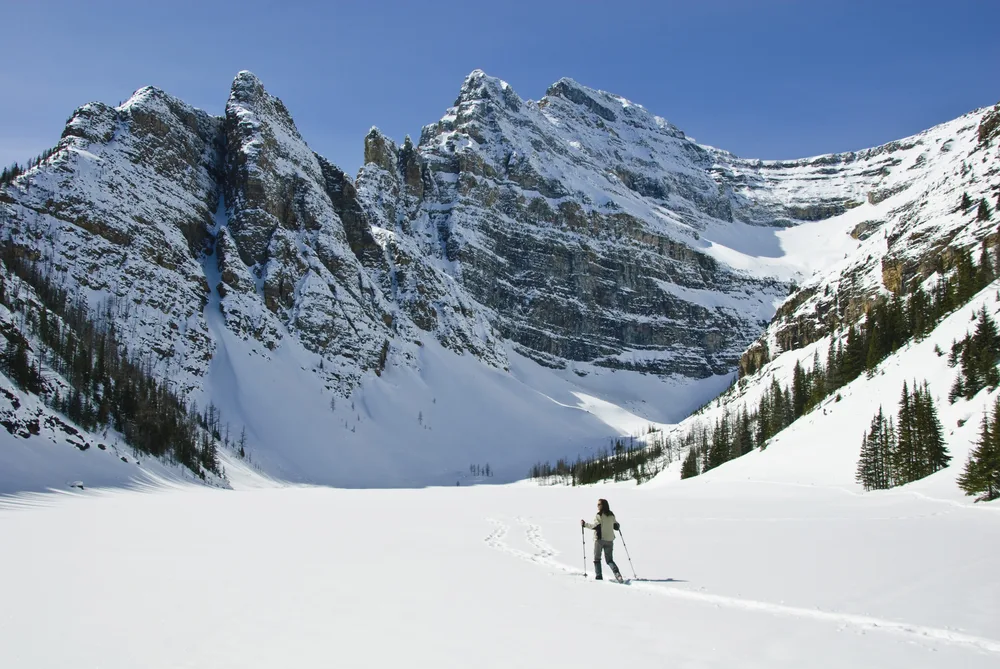
Sebastien Burel/Shutterstock
The cheapest time to visit in winter is late January or February, as most families return to work and kids go back to school.
Lake Louise and the entire Banff area are iconic travel destinations but also costly. Demand for hotel rooms, rental cars, and flight tickets can drive prices to the extreme, especially if you don’t book far in advance.
Summer is generally the most expensive time to visit the entire Banff National Park area, particularly Lake Louise. Winter is considerably cheaper but still has a high demand for ski resorts and can still be pricey for many visitors.
Early spring — right as the snow turns to water and the roads get mucky — is usually the cheapest time to visit, but it’s inexpensive for a reason.
Ski resorts close down as the weather gets warm, but many hiking trails are muddy and cold. While spring is affordable, it makes for a poor vacation overall.
Least Busy Time to Visit Lake Louise
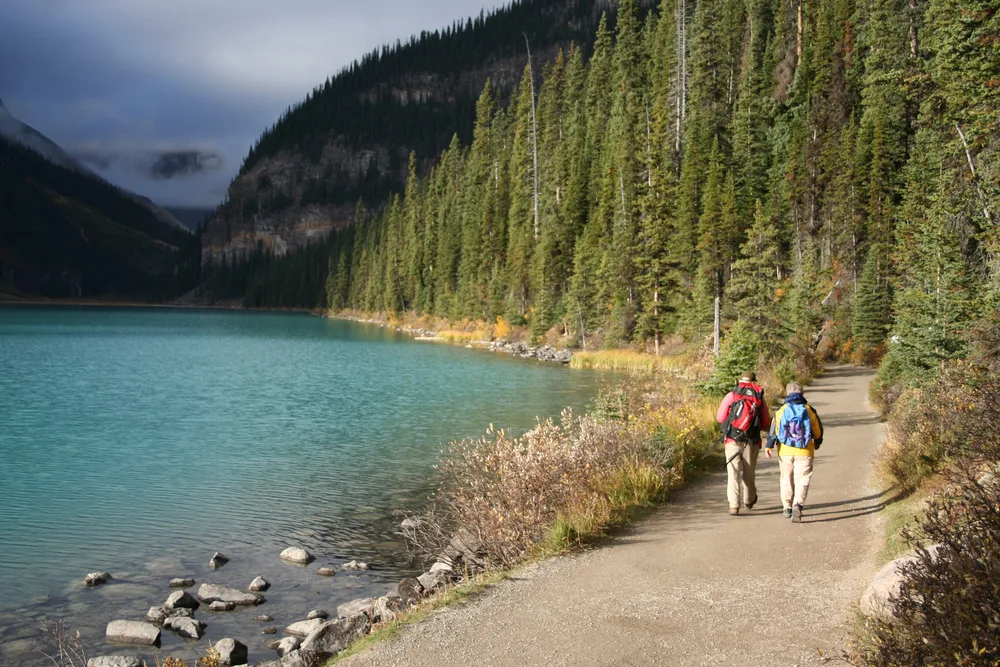
Stephen Finn/Shutterstock
The least busy times to visit Lake Louise are in the winter, from late January to February. Many visitors come over Christmas or New Year’s when they don’t have work or their kids don’t have school.
If you can manage to hit the sweet spot after most people return to work, you can save money and have the ski hills largely to yourself. If you want to visit Lake Louise in warmer weather, April is a good alternative, though you will likely have to deal with poor weather.
April evenings in Lake Louise are usually below freezing, while days are in the 40s. Lake Louise is packed through the entire summer.
But if you want to see the iconic summertime turquoise of the lake while avoiding crowds, try to visit on weekdays in June. Of the summer months, June is the least busy (though still crowded), and weekdays tend to have fewer people out and about.
Worst Time to Visit Lake Louise
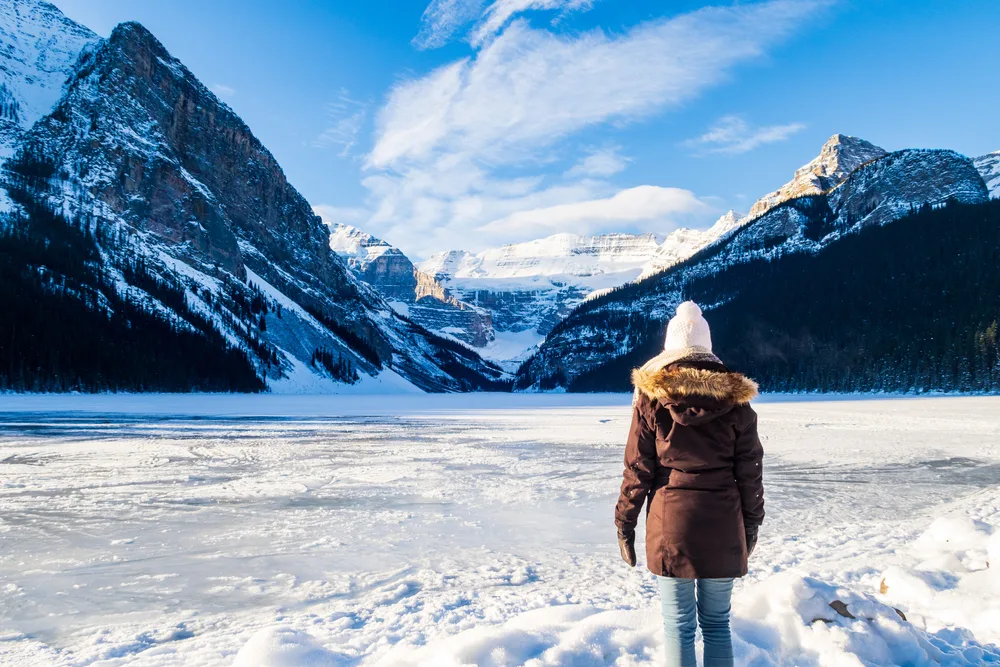
Awana JF/Shutterstock
The worst time to visti Lake Louise is in October and November, as there is little to do, especially if you’re an avid winter sports fan or enjoy summer activities in the wilderness.
Skiing is only available from late November onwards, so if you visit before that time, you won’t have access to the Ski Resort and may also not be able to skate. Temperatures in October and November usually stay around 45 degrees, so they’re not low enough for the lake to freeze.
However, you can still hike and perhaps enjoy the first snow of the season if you pick these fall months for your trip. You’ll have to dress in layers and ensure that you’re prepared for any sudden change in the weather to enjoy your trip.
Things to Consider
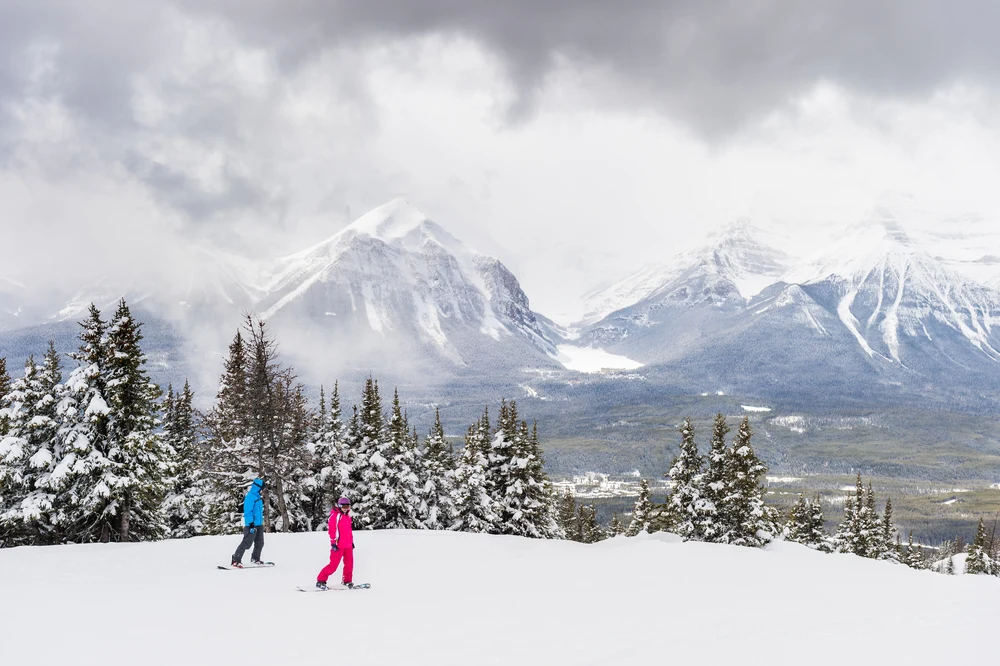
Shen Max/Shutterstock
Planning and knowing what you’ll need for your trip is essential to ensure you have the best possible trip to Lake Louise and the Banff area. When making plans, keep the following things in mind:
- The Calgary International Airport is the closest airport to Lake Louise, which is a two-hour drive away. You will almost certainly need to rent or bring a car if you plan to visit the area.
- Lake Louise is exceptionally snowy. The heavy snow is perfect for the area’s many ski resorts but less ideal for those trying to drive there. Use caution in winter, especially if you don’t have experience driving in the snow.
- As Lake Louise is inside Banff National Park, you must purchase a Park Pass to visit. If you plan to visit more than once in the year or stay longer than a week, consider purchasing a Discovery Pass to save in the long run.
- Parking in Lake Louise and the entire Banff area is challenging. Lots fill up fast, and it can be impossible to park without a reservation. Consider checking if your hotel has shuttle options or if Canada’s Roam Public Transportation Options work with your schedule.
- You’re in the wilderness. Despite being hotspot tourist destinations, remember that Banff National Park and Lake Louise are still parts of the Canadian wilderness. If you plan to hike or leave the town areas, be cautious and prepared for bears, wildlife, and extreme weather events.
Frequently Asked Questions
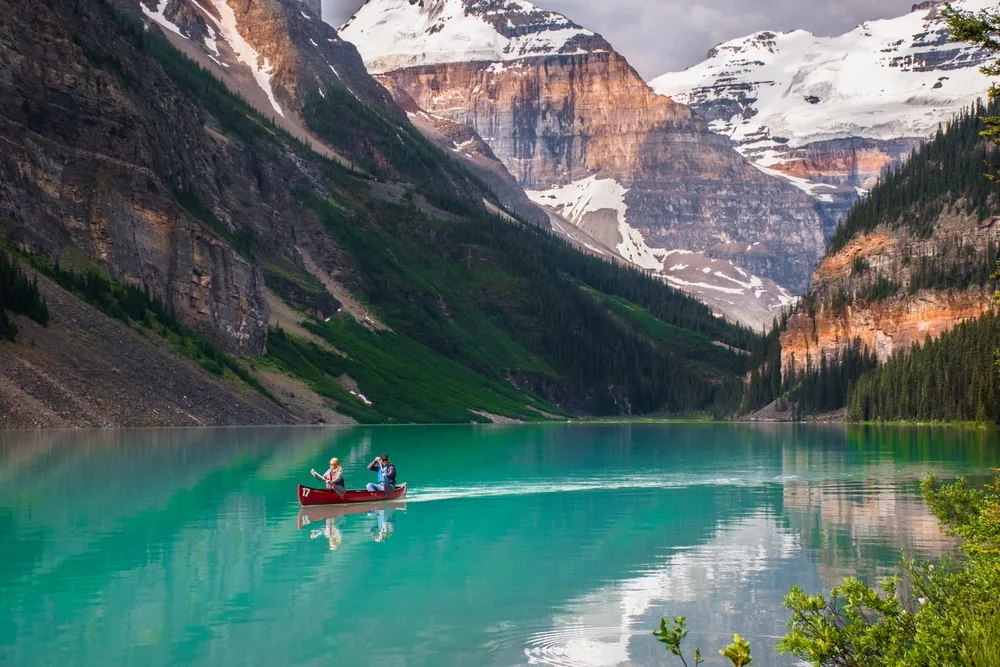
Lake Louise, Alberta, Canada – July 8 2017: Red canoe floating in turquoise water at Lake Louise. Couple canoeing together in the beautiful glacial Lake Louise at sunrise/Jordan Feeg/Shutterstock
If you’re planning a trip to Lake Louise and still have questions, we have answers below:
How many days do you need in Lake Louise?
Most visitors recommend setting aside at least five days to visit the area, but you could easily spend a week exploring without running out of things to do.
What is the best time of year to visit Banff and Lake Louise?
The best time of year to visit Banff and Lake Louise depends on what you want to do in the area. If you’re going to ski and participate in winter sports, you should visit in peak winter. If you’re going to hike, you should visit during peak summer or fall.
What is the best month to visit Banff?
The best month to visit Banff depends on what you want to do. You should visit in January or February if you’re going to ski or snowboard. If you want to participate in summer activities, you should visit in June or July.
What months is Lake Louise frozen?
Lake Louise typically begins to freeze in November and is completely frozen over by late December. Snowfall in the area picks up in October.
Where do you fly into Lake Louise?
Most people visiting Lake Louise fly into Calgary International Airport, about two hours away from the lake.
Why is Lake Louise so famous?
Lake Louise is famous for its turquoise waters in the summer, brilliant colors in the fall, and many ski resorts in the winter. It is one of the most beautiful places on Earth, and there’s plenty to do no matter when you visit.
Is Lake Louise worth it?
Lake Louise is worth the trek into the Canadian Rockies. It is considered one of the most beautiful places on Earth and was named a World Heritage Site in 1984.
How far apart are Banff and Lake Louise?
Banff and Lake Louise are about 40 miles (65 km) apart, or about a 45-minute drive, depending on the weather. If you don’t want to make the drive or don’t want to worry about parking, there are plenty of shuttles that can take you back and forth instead.
What US city is closest to Banff?
The closest US city to Banff is Spokane, Washington, which is more than 350 miles (six and half hours) away from the town. If you want to make the trek, be prepared for many hours of mountain driving and snow in the winter months.
What months can you see the Northern Lights in Banff?
The Northern Lights are most visible in the winter months and most active in spring and fall. Though you can see them from October to May, your best chance of seeing the Northern Lights is late fall or early spring.
What is the rainiest month in Banff?
June is the rainiest month in Banff, which can make trails and hiking a muddy experience. The muddiness is worsened by snow melt, which picks up as the days get warmer, further increasing the amount of water on trails and roads.
How long is the shuttle from Banff to Lake Louise?
The shuttle from Banff to Lake Louise is about 50 minutes, though wifi on ROAM buses and fantastic views out the windows helps this time go by faster.
Can you walk all around Lake Louise?
No, there is no trail that goes all the way around Lake Louise. The closest option is the Lake Louise Shoreline Trail, which is a few miles of flat trail that hugs the lake and offers spectacular views, even if it can’t take you all the way around.
Is Lake Louise swimmable?
No, Lake Louise is not swimmable. Like many mountain lakes, it stays cold year-round, around 40 degrees. Though some people enjoy taking winter dips (a tradition called the Polar Plunge), regular swimming in the lake is far too cold to be comfortable.
So, When Should You Visit Lake Louise?
No matter what kind of trip you want to take, Lake Louise is the perfect place to go. There are skiing and snow sports in the cold season and camping and hiking in the warmer months.
Even the in-between seasons, like fall and spring, are beautiful vacations if you don’t mind the cold. So, with so much to see and do all year round, what are you waiting for — book your trip today!



